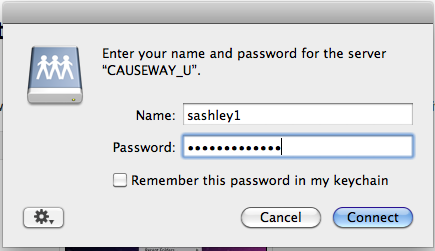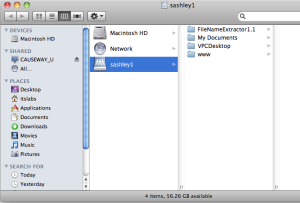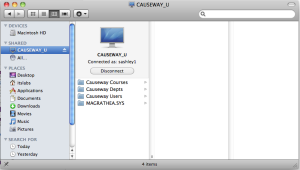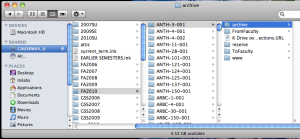Please refer to the Services for Macs at Drew page for general information about this service.
Mac laptops and desktops are able to connect to Drew University network drives through the operating system itself without the use of of any additional software. The following instructions demonstrate how to connect to your F: drive (your personal network space) along with other drives you may need access to such as G:\ and K:\.
The following instructions will work on Drew's campus while connected to Drew's wired network ONLY. Also, there is no interface from the Mac to change file server permissions. This still needs to be done from a Windows machine running the Novell Client.
1. From the Go menu in the Finder, select Connect to Server. |
|
2. Enter one of the following in the "Server Address:" box: AFP or CIFS? Problems with Lion At this time, there are issues accessing the campus OES servers with either AFP or CIFS using MacOS 10.7 (Lion). AFP will fail with an error about the version of the protocol you're using not being supported, and CIFS may cause a kernel panic on the Mac and crash the computer. Apple and Novell are working on patches and workarounds for both issues and we will update as solutions should become available.
|
|
3. The Login window will pop up. |
|
3. The drive you selected will then appear as a folder on your screen. |
|
4. Clicking on the CAUSEWAY_* option in the left-hand pane may allow you to see other drives you could access at the same time. However, these may not always be present depending on server load balancing, so the best practice is to establish a separate connection (as above) to each drive you need. |
|
5. For example, to find your K: drive, click Causeway Courses, where you will see one folder for each semester. |
|
6. To logout, click once again on CAUSEWAY2_U (or CAUSEWAY2_O or CAUSEWAY2_P) if you connected to your department drive, CAUSEWAY2_T if you accessed your K: drive) in the left-hand column and click Disconnect. |
|
Always Disconnect
If you do not click "Disconnect" as described above, you will remain logged into your Drew network drives. Anyone using the computer after you will have complete access to your folders and files.
Please disconnect every time you are finished using your Mac.






